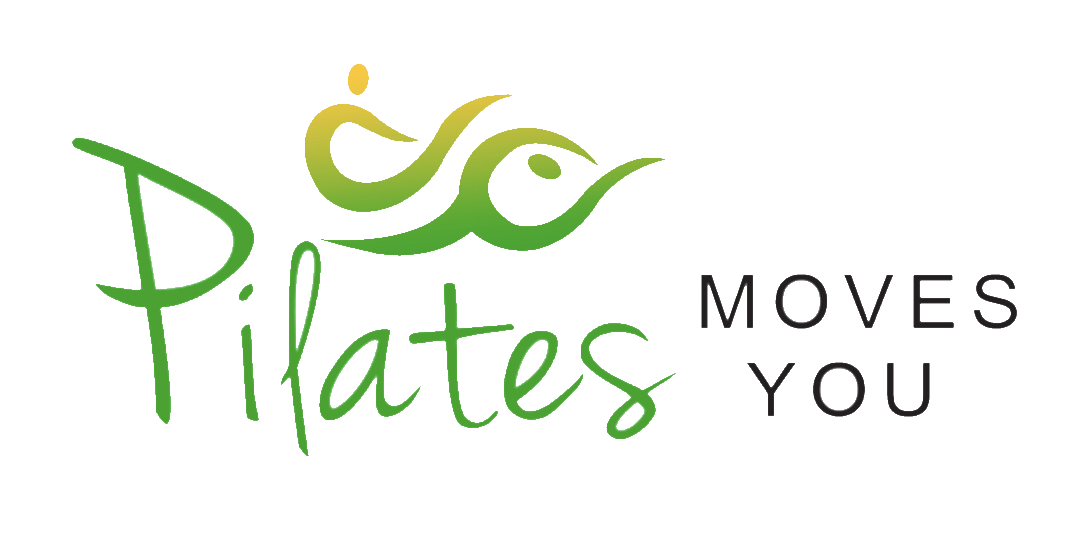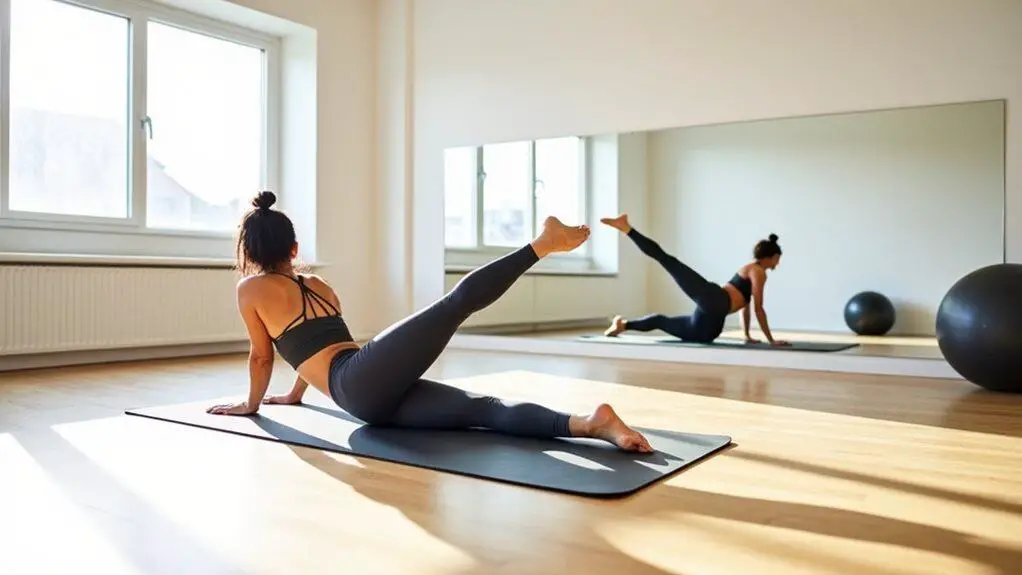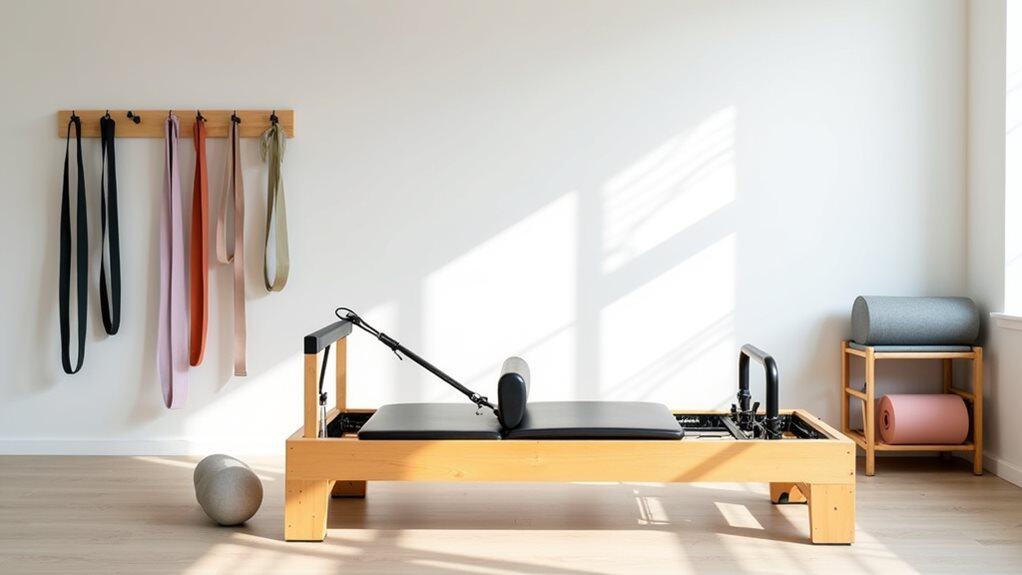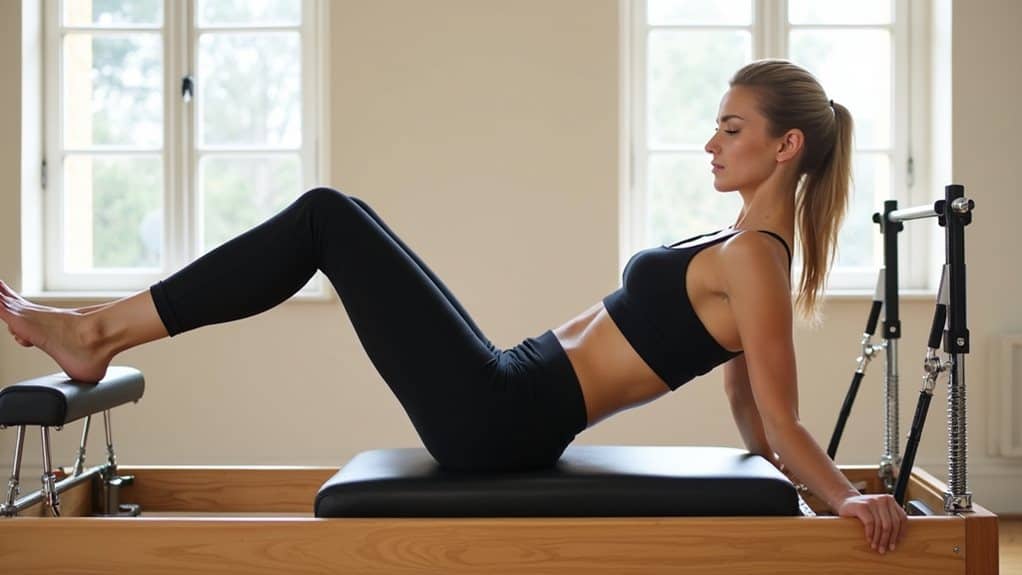Welcome to our article on Pilates for athletes! As an athlete, you know that staying healthy and injury-free is key to performing your best. That’s where Pilates comes in.
Pilates is a form of exercise that can help athletes prevent overuse injuries, maintain a healthy balance, and enhance their performance.
In this article, we’ll explore the benefits of practicing Pilates for athletes and provide tips on how to incorporate it into your training routine. So, whether you’re a seasoned athlete or just starting out, read on to discover the role of Pilates in preventing overuse injuries in athletes.
What is Pilates?
Pilates is a form of exercise that focuses on building core strength, flexibility, and balance. It was developed in the early 20th century by Joseph Pilates, who believed that physical and mental health were closely connected. The Pilates method is based on a series of exercises that are performed on a mat or using special equipment, such as the Reformer.
The key principles of Pilates include breath, concentration, control, centering, precision, and flow. These principles are used to guide the movements and ensure that they are performed with maximum efficiency and effectiveness.
How Pilates Can Benefit Athletes
Pilates is a unique form of exercise that can be incredibly beneficial for athletes. By focusing on building core strength, flexibility, and balance, Pilates can help athletes improve their overall performance while also reducing their risk of injury. Here are some of the ways in which Pilates can benefit athletes:
- Improved balance and coordination: Many Pilates exercises require a great deal of balance and control, which can help athletes improve their overall balance and coordination both on and off the field.
- Increased flexibility: Pilates can help athletes improve their flexibility, which can be extremely beneficial in preventing injuries such as muscle strains and sprains.
- Better posture: Pilates can help improve posture by strengthening the core muscles that support the spine and improving overall alignment.
- Enhanced core strength: Pilates is particularly effective for strengthening the core muscles, which are essential for athletic performance in a wide range of sports.
In addition to these benefits, Pilates can also help athletes avoid overuse injuries by promoting a healthy balance between different muscle groups. By working on both strength and flexibility, Pilates can help athletes maintain a healthy balance throughout their bodies, reducing the risk of injury due to muscle imbalances.
Overall, Pilates is an excellent choice for athletes who are looking to improve their performance and reduce their risk of injury. By incorporating Pilates into their training routines, athletes can benefit from improved balance, coordination, flexibility, posture, and core strength. Additionally, Pilates can be a great choice for athletes who are recovering from an injury, as it can be used for rehabilitation and to help athletes return to their sport or activity more quickly and safely.
Pilates Exercises for Athletes
There are numerous Pilates exercises that can benefit athletes of all sports and skill levels. These exercises focus on building core strength, improving balance and stability, and enhancing flexibility and range of motion. Below are some examples of Pilates exercises that are particularly useful for athletes:
| Exercise | Description |
|---|---|
| The Plank | A basic exercise that targets the entire core, including the abs, obliques, and lower back. Start in a push-up position and hold the body parallel to the ground, engaging the core and keeping the spine neutral. |
| Side Planks | Similar to the plank, but focused on the obliques. Start in a plank position and rotate onto one arm, while lifting the opposite arm towards the ceiling. Balance on one arm and the outer edge of one foot, engaging the obliques. |
| Single-Leg Circles | An exercise that strengthens the core and hips. Lie on your back with legs extended straight up. Circle one leg while keeping the other still, moving from the hip joint and engaging the core to stabilize the pelvis. |
| Spine Stretch | An exercise that focuses on spinal flexibility and core control. Sit on the mat with legs straight and slightly wider than shoulder-width apart. Reach arms forward and round the spine forward, elongating through the upper back and engaging the abs. Roll back up to sitting position. |
| Hip Circles | An exercise that improves hip mobility and core strength. Stand with feet hip-width apart and hands on hips. Circle hips in one direction, then reverse direction, engaging the abs to maintain stability. |
These exercises can be modified or progressed to suit an athlete’s individual needs and level of experience. A qualified Pilates instructor can help athletes develop a personalized program that addresses their specific goals and areas of focus.
Pilates as Cross-Training for Athletes
Pilates can be an effective cross-training tool for athletes of all sports and activities. Incorporating Pilates into their existing training programs can help athletes improve their performance and prevent injuries.
One of the key benefits of Pilates for athletes is its focus on building core strength. By improving abdominal and back musculature, athletes can achieve better balance and stability, allowing them to generate more power and avoid injuries.
In addition, Pilates can help athletes improve their flexibility, which is essential for optimal athletic performance. By focusing on elongating the muscles and increasing joint mobility, Pilates can help athletes achieve greater range of motion and reduce the risk of injury.
Whether an athlete is a runner, a weightlifter, or a swimmer, Pilates can provide valuable benefits. By incorporating Pilates exercises into their training routine, athletes can improve their balance, coordination and overall body awareness, which can translate to better performance in their sport or activity.
Moreover, Pilates can be particularly beneficial for athletes who perform repetitive movements, such as runners or cyclists. These movements can result in overuse injuries that can be prevented by practicing Pilates, which helps maintain a healthy balance and avoid muscular imbalances.
Finally, Pilates can help enhance an athlete’s mental focus, mindfulness, and stress-management skills. By emphasizing deep breathing and concentration, athletes can learn to stay calm and focused, even in high-pressure situations.
Pilates for Recovery and Rehabilitation
Pilates can be an effective tool for recovery and rehabilitation after an injury. In fact, many physical therapists and rehabilitation specialists incorporate Pilates exercises into their treatment plans for athletes. Pilates can help improve mobility, flexibility, and strength during the recovery process, which can help athletes return to their sport or activity more quickly and safely.
One of the reasons Pilates is so effective for recovery and rehabilitation is because it can be customized to meet the specific needs of each athlete. Pilates exercises can be modified to accommodate injuries or physical limitations, which allows athletes to participate in a low-impact form of exercise that is less likely to exacerbate their injuries.
Another benefit of Pilates for recovery and rehabilitation is that it can help athletes maintain their fitness and conditioning, even when they are unable to participate in their usual training routines. Pilates exercises can be used as a form of cross-training to maintain strength, flexibility, and mobility while recovering from an injury.
How Pilates Can Help with Recovery and Rehabilitation
Pilates can be used to help athletes recover from a wide range of injuries, including those that affect the back, hips, knees, and shoulders. Pilates exercises can help improve range of motion, build strength, and reduce inflammation in the affected areas.
For athletes who have undergone surgery, Pilates can be particularly effective for rehabilitation. Pilates exercises can help improve circulation and lymphatic drainage, which can help reduce swelling and promote healing.
Pilates can also be used to address muscle imbalances or compensation patterns that may contribute to injury. By focusing on core strength and alignment, Pilates can help athletes develop better movement patterns and reduce the risk of re-injury.
Working with a Pilates Instructor for Recovery and Rehabilitation
If you are recovering from an injury and interested in incorporating Pilates into your rehabilitation plan, it’s important to work with a Pilates instructor who has experience working with athletes and understands your unique needs and goals. A qualified Pilates instructor can help you modify exercises to accommodate your injury and develop a plan that is safe and effective for your recovery.
Pilates for Mental Health and Well-Being
In addition to physical benefits, Pilates can also have a positive impact on athletes’ mental health and well-being.
Pilates can help reduce stress levels and improve mindfulness, which can be beneficial for athletes who face high-pressure situations in their sport or activity.
By focusing on breathing and body awareness, Pilates can help athletes develop a positive relationship with their training and their bodies, leading to improved body image and self-confidence.
Pilates can also be a form of self-care and relaxation, allowing athletes to take a break from the demands of their sport and recharge both physically and mentally.
Overall, incorporating Pilates into an athlete’s training program can have numerous benefits for both their physical and mental health, leading to improved performance and overall well-being.
Choosing a Pilates Instructor for Athletes
When it comes to choosing a Pilates instructor for athletes, it’s important to find someone who understands the unique needs and goals of athletes. Here are a few tips on what to look for:
1. Experience
Look for an instructor who has experience working with athletes of all levels. They should understand the demands of different sports and be able to tailor their instruction to meet the needs of individual athletes.
2. Qualifications
Check to see if the instructor is certified by a recognized Pilates organization, such as the Pilates Method Alliance. This ensures that they have undergone the necessary training and can provide safe and effective instruction.
3. Communication
Choose an instructor who communicates clearly and effectively. They should be able to explain exercises in a way that makes sense and be able to provide feedback on form and technique.
4. Personality
Find an instructor who is approachable, supportive, and positive. Athletes need someone who can motivate them and help them stay focused on their goals.
5. Location and Availability
Consider the location of the Pilates studio and the instructor’s availability. Find someone who can work around your schedule and make it easy to incorporate Pilates into your training routine.
Pilates for Athletes: Frequently Asked Questions
Q: How often should athletes practice Pilates?
A: It depends on the athlete’s training goals, schedule, and existing fitness level. Generally, practicing Pilates 2-3 times a week can be beneficial for maintaining core strength, flexibility, and overall fitness. However, athletes should consult with a Pilates instructor to determine a personalized practice schedule.
Q: Can Pilates replace other forms of training for athletes?
A: Pilates can be a great addition to an athlete’s training program, but it may not necessarily replace other forms of training entirely. Pilates is particularly beneficial for improving core strength, flexibility, and balance, but it may not provide the same cardiovascular or strength-building benefits as other forms of training. It’s important for athletes to have a well-rounded training program that includes a mix of cardio, strength training, and flexibility work.
Q: Is Pilates only for certain types of athletes?
A: No, Pilates can be beneficial for athletes of all types and levels. Whether you’re a runner, swimmer, cyclist, or team sport athlete, Pilates can help improve your performance and prevent injuries.
Q: Can Pilates help with injury rehabilitation?
A: Yes, Pilates can be a great tool for injury rehabilitation. The focus on core strength, flexibility, and balance can help athletes recover from injuries and improve their overall mobility and strength. However, athletes should always consult with a medical professional before starting any new exercise or rehabilitation program.
Q: Do I need any special equipment to practice Pilates?
A: While Pilates can be done on a mat, many Pilates exercises use specialized equipment such as the reformer, cadillac, or barrel. Athletes can practice Pilates in a studio with equipment, or they can use specialized Pilates equipment at home with the guidance of a trained instructor.
Overall, Pilates can be a valuable addition to an athlete’s training program, helping to prevent injuries, improve performance, and promote overall health and well-being. Athletes should consult with a trained Pilates instructor to develop a personalized practice plan that meets their unique needs and goals.




